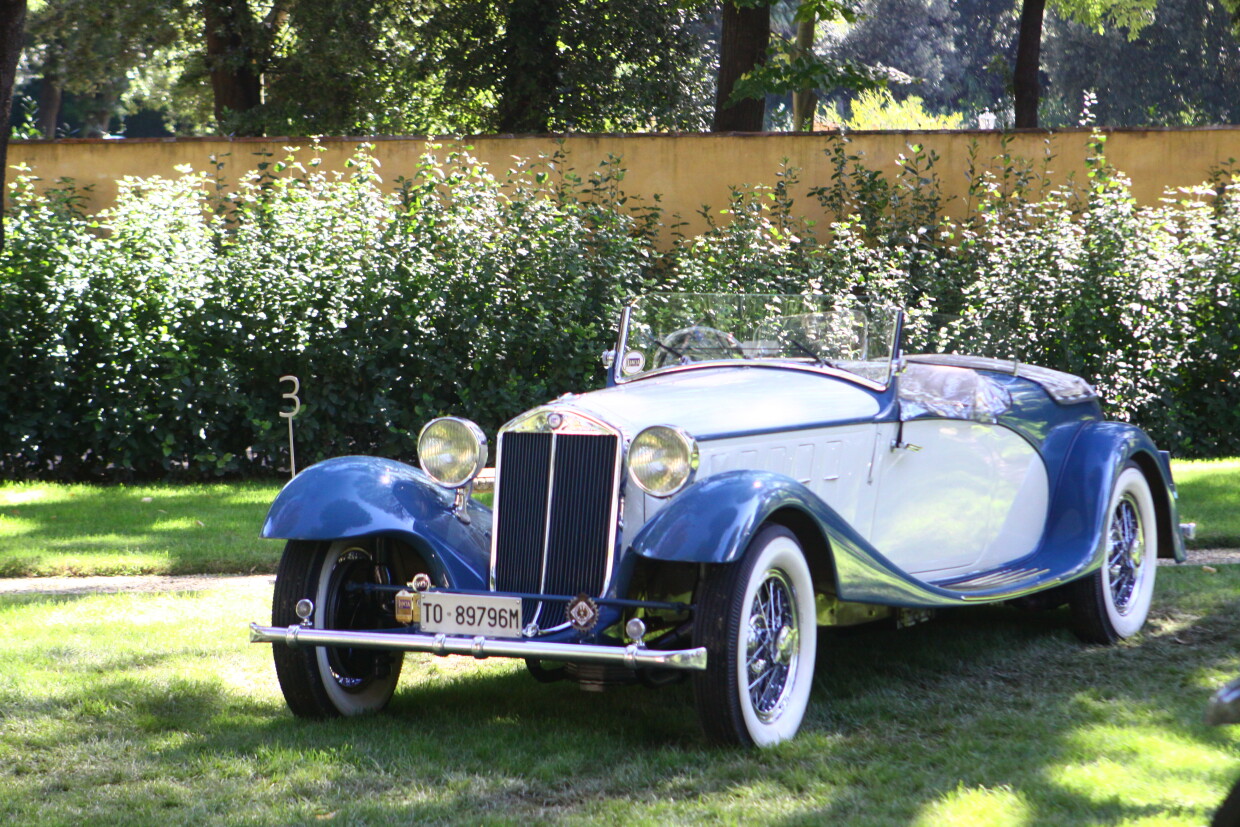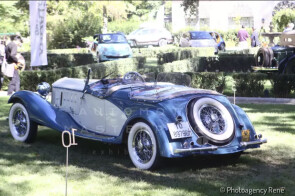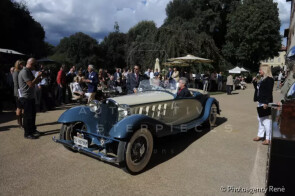
1933 Lancia Astura Torpedo Grand Sport
ON/OFF
Why am I an Automotive Masterpiece?
The Lancia Astura was a car produced by the Turin-based company from 1931 to 1939. In the early 1930s, Lancia’s latest model was the large Dilambda (launched in 1929), while the Lambda—after nearly a decade in production—was due to be replaced. The Dilambda featured a V8 engine with a 4-liter displacement, whereas the Lambda, originally equipped with a 2.1-liter engine, reached over 2.5 liters in its final series. Although the Dilambda retained its flagship status, Lancia decided to replace the Lambda with two new models aimed at different customers: the Artena, a 4-cylinder car with a displacement under 2 liters, and the Astura, fitted with a 2.6-liter V8 engine. The two models were mainly differentiated by their engines but also had different wheelbases: the Artena had a 299 cm wheelbase, while the Astura’s was 19 cm longer to accommodate the larger engine. Unlike previous Lancia models, the Astura was named after a historic castle near the Roman city of Nettuno. Its V8 engine, with a 19° angle between banks, was a simplified and downsized version of the Dilambda unit, with a displacement of 2606 cc and an output of 72 hp at 4000 rpm. In addition to a cast-iron engine block, triple chain-driven distribution, and a self-cleaning oil filter, the engine’s most distinctive feature was its unique two-piece cylinder head: the lower part (cast iron) housed the valves, while the upper part (aluminum) contained the rocker arms and their shaft, with the central camshaft rotating between the two. The water-based cooling system, derived from the Artena, included a thermostat-controlled throttling device. The Astura also shared the centralized lubrication system with the Artena. Moving away from the unitary body construction of the Lambda, both the Astura and the Artena employed a chassis made of two vertical box-section side members reinforced by an X-shaped brace. Two longitudinal round tubes branched from a central cross-member and were integrated into the front ends of the side members, which slightly converged. The suspension system combined different solutions: at the front, Lancia’s classic layout was retained—though without the diagonal braces that, in the Lambda, had connected the radiator frame to the suspension cylinders, now made redundant by improved chassis rigidity—while the rear used a conventional live axle with semi-elliptical leaf springs and Siata friction shock absorbers. Powered by a Zenith double-barrel carburetor, the Astura offered excellent performance thanks to its favorable power-to-weight ratio. The chassis weighed just under a ton (960 kg), and even the sedan version remained relatively light at 1,250 kilograms, enabling a top speed of around 125 km/h. While Lancia did produce a sedan version—available with either four windows and 4–5 seats or six windows and 6–7 seats—the Astura became the queen of custom coachbuilt cars of its era. Nearly all major Italian coachbuilders, as well as several international ones, created special-bodied examples. Notable names included Bertone, Boneschi, Borsani, Brianza, Castagna, Colli, Garavini, Ghia, Stabilimenti Farina, Touring, and Viotti, along with international firms such as Weinberger & Buhne, John Charles, Abbott, and Kevill Davies & March. A cabriolet by Pinin Farina, built in 1936, was awarded Best of Show at the Pebble Beach Concours d’Elegance in 2016. Another cabriolet by Stabilimenti Farina won the 1947 edition of the Concorso d’Eleganza Villa d’Este, although it never entered mass production. First introduced at the Paris Motor Show in October 1931, the Astura underwent a minor update about a year later (Second Series). In 1933, with the Third Series, more significant changes were introduced: the chassis was made available in two different wheelbase lengths, the engine displacement was increased (from 2.6 to 3 liters), power was improved by about 10 hp, and the braking system was revised. Further significant changes were made to the chassis in 1937 with the Fourth Series, which effectively replaced the discontinued Dilambda. Chassis from this series were often used for official government vehicles, mostly designed by Boneschi and Pinin Farina, sometimes with monumental proportions. The engine of the final Astura series also served as the basis for the Lince armored car, occasionally referred to as the “Astura armored car.” A total of 2,912 Astura units were produced.
In the autumn of 1933, the third series of the Astura was introduced, bringing numerous technical and stylistic updates. The chassis was now offered in two versions: long wheelbase (type 233 L) and short wheelbase (type 233 C). The V8 engine was also revised: the angle between the cylinder banks was slightly reduced from 19° to 17°30′, while displacement increased from 2,606 to 2,973 cc, and output rose from 72 to 82 hp. Among the most notable improvements were the adoption of a Dewandre brake booster and a 30% increase in fuel tank capacity—from 60 to 78 liters. From an aesthetic perspective, the radiator grille was redesigned with a more pronounced tapering shape: slanted, slightly pointed, and narrowing toward the bottom. The front fenders were also new. A distinctive innovation was the new mobile spare-wheel carrier: it allowed for the optional integration of a trunk between the rear bodywork and the spare wheel. Without the trunk, the spare wheel remained in an inclined position; with the trunk installed, the wheel was mounted vertically.
The Lancia Astura Torpedo Gran Sport with chassis no. 30*2056 is a one-off torpedo, the only Castagna bodied version in double phaeton style. It is a Series II car but with a series III engine. It was exhibited at the 1933 Villa d’Este Concours d’Elegance where it won the most coveted award, the Coppa d’Oro Referendum. It won again in 1991 Villa d’Este Concours d’Elegance. It’s the only car to have won the Concours twice. Mr. Ercole Castagna had a big show room in New York (together with Isotta Fraschini) managed by the engineer Veniero D'Annunzio, son of the great italian poet. Mr D'Annunzio managed to sell the extraordinary automobile to the famous, well known tobacco heiress from New Jersey, Doris Duke. She was called "the richest girl in the world". She bought the Astura for her husband James Henry Roberts Cromwell, an american displomat. With this outstanding outcome, a colored picture was inserted in the Castagna's 1934 famous catalogue with a Gabriele D'Annunzio personal dedication. The car later passed through the hands of several important owners (see the history) and was a star of several concourse d’elegance.




